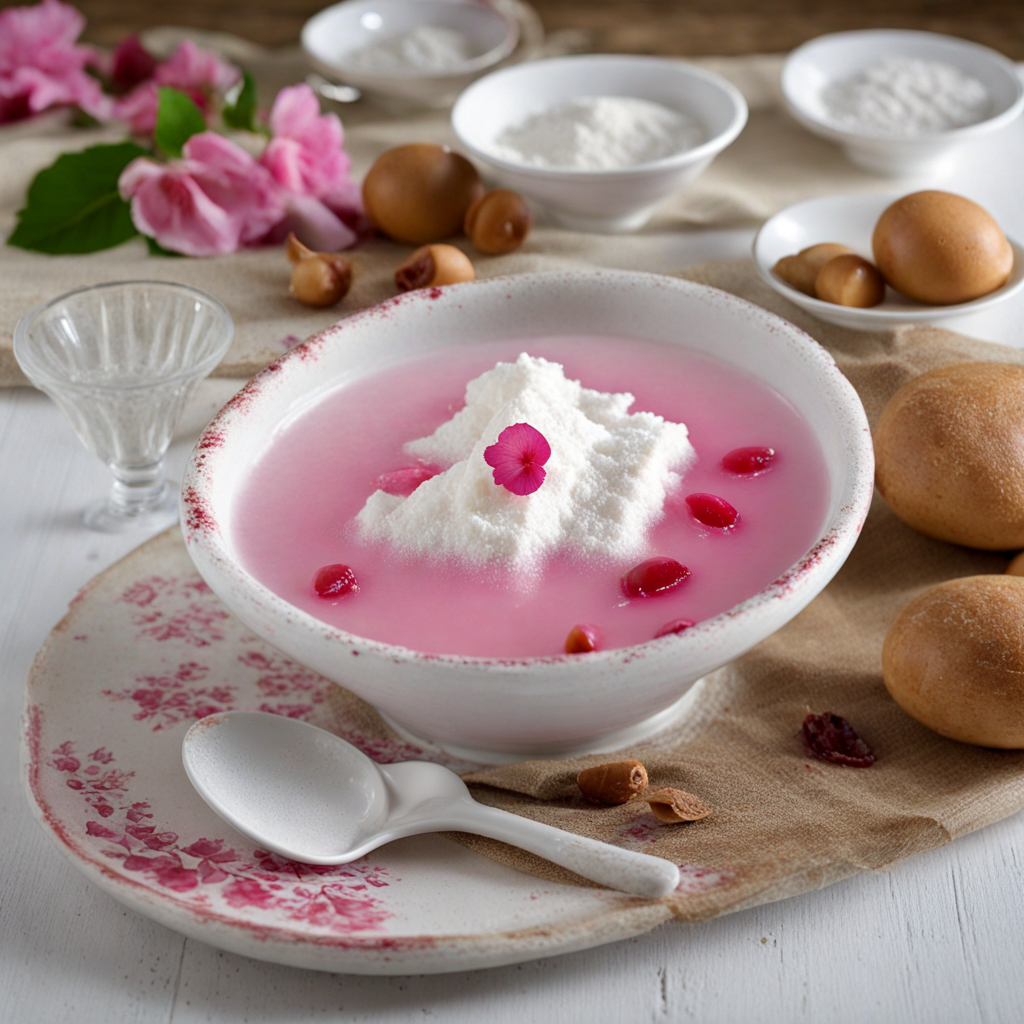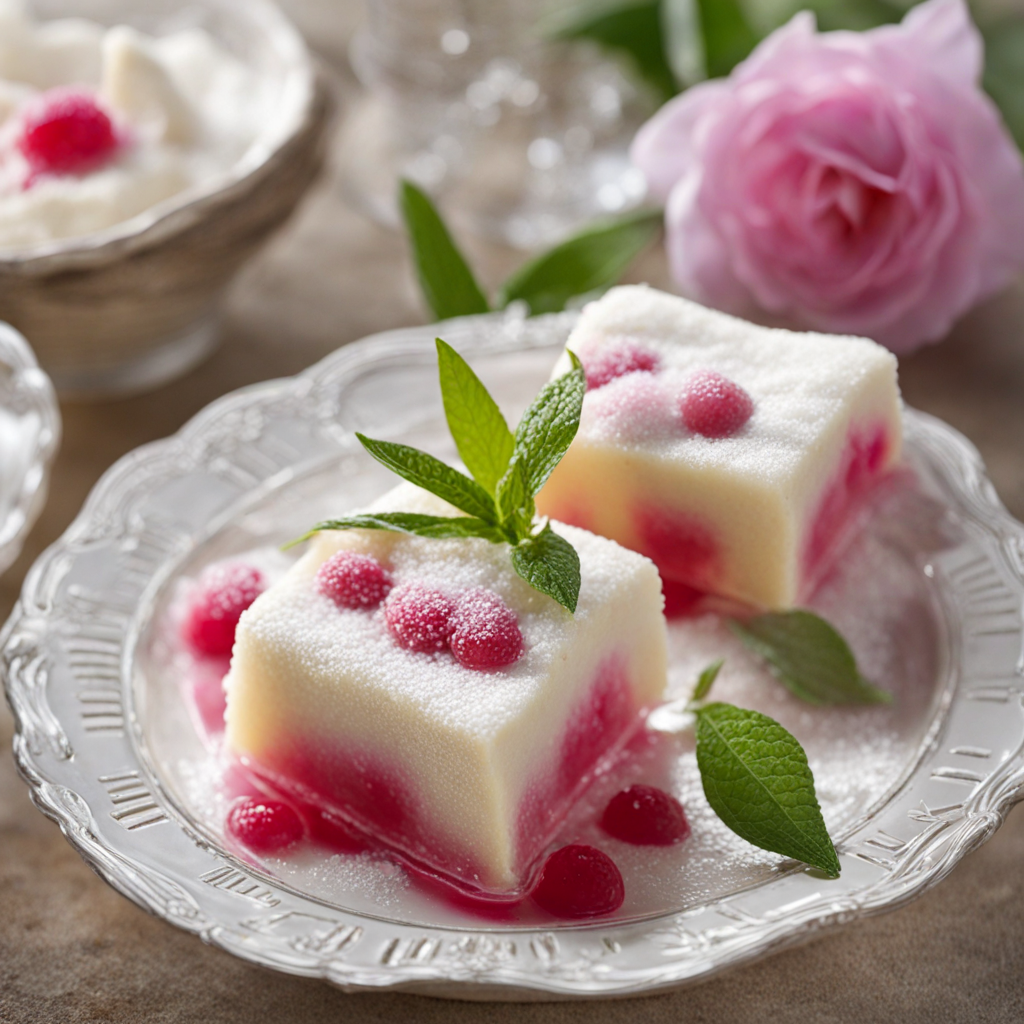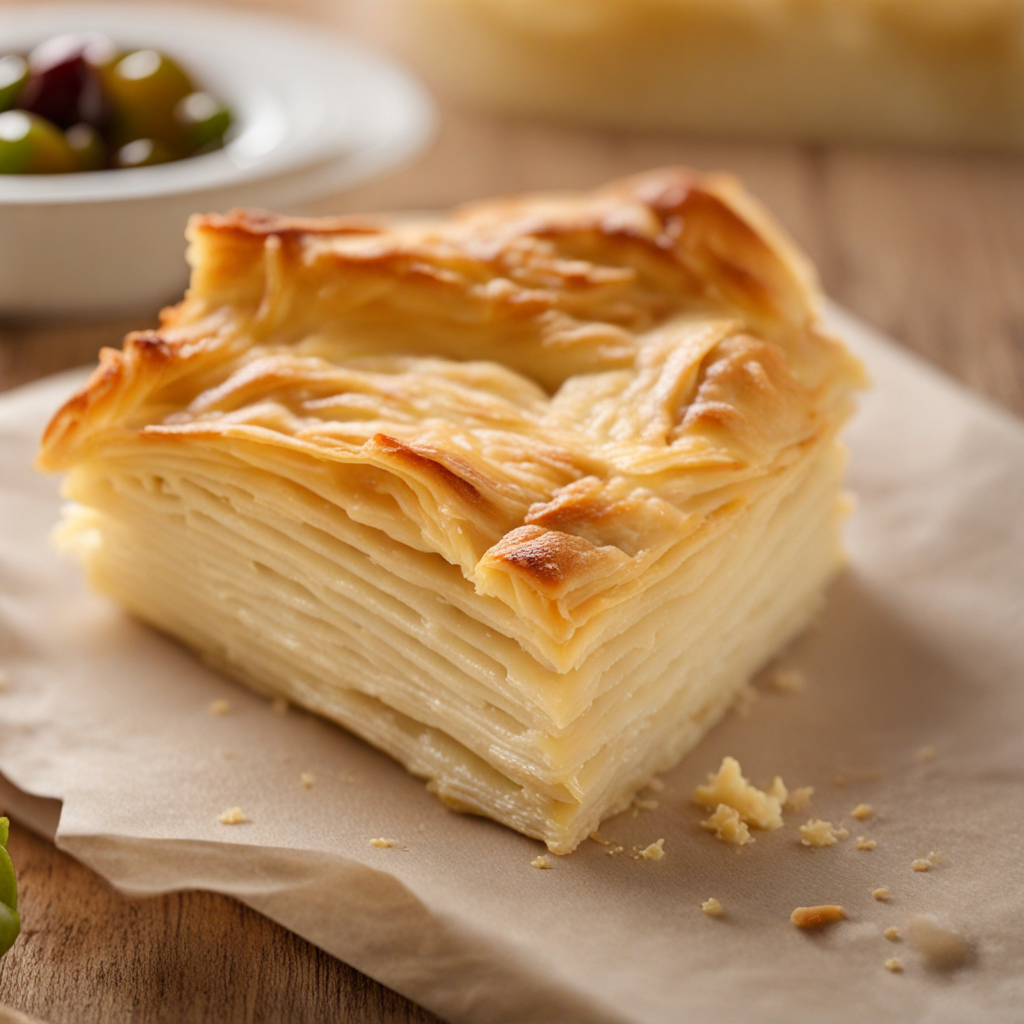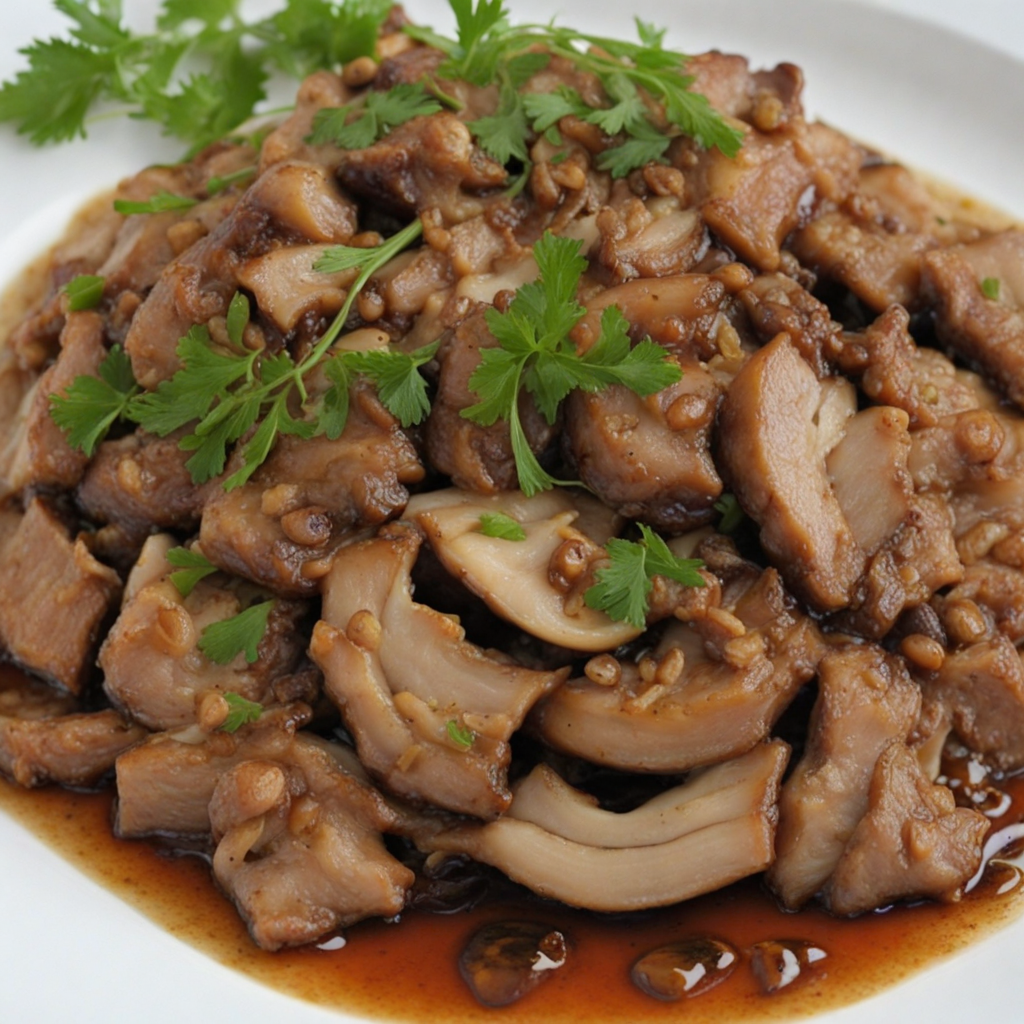Mahalepi
Mahalepi is a delightful traditional dessert from Cyprus, known for its delicate flavors and refreshing qualities. This sweet treat is essentially a milk pudding, typically flavored with rosewater, which gives it a fragrant and floral note that is both unique and inviting. The pudding is often thickened with cornstarch or rice flour, resulting in a smooth and creamy texture that melts in your mouth. It's usually served chilled, making it a perfect dessert for warm weather, and is often garnished with crushed nuts or a sprinkle of cinnamon to enhance its visual appeal and taste. One of the enchanting aspects of Mahalepi is its versatility. While the classic version is flavored with rosewater, variations exist that incorporate different flavorings such as orange blossom or even mastic, a resin from the mastic tree that adds an aromatic and slightly pine-like essence. This adaptability allows for a range of taste experiences, making each bite a little adventure. The dessert is typically set in small molds, creating charming individual servings that are perfect for sharing during festive occasions or family gatherings. In addition to its delightful taste and texture, Mahalepi is often served alongside a drizzle of syrup or a dollop of cream, which adds an extra layer of luxury to the experience. This dessert not only offers a taste of Cypriot culture but also a glimpse into the island's rich culinary heritage. Enjoying Mahalepi is a sensory experience that captivates with its sweet aroma, smooth consistency, and the comforting warmth of nostalgia, making it an essential discovery for anyone looking to explore the flavors of Cyprus.
How It Became This Dish
The Enchanting History of Μαχαλεπί: A Taste of Cyprus Mahalebi, or Μαχαλεπί in Greek, is a traditional dessert that has long been cherished in Cyprus and throughout the Eastern Mediterranean. This creamy, fragrant pudding made primarily from milk, sugar, and cornstarch or rice flour, is often flavored with rosewater or orange blossom water, giving it a delicate aroma that evokes the essence of the region. While its simplicity belies its rich history, mahalebi serves as a culinary symbol of cultural exchange, historical resilience, and communal celebration. Origins: A Culinary Legacy The origins of mahalebi can be traced back to the Ottoman Empire, which ruled over Cyprus from the 16th to the 19th centuries. The dessert is believed to have roots in the Middle Eastern tradition, where similar puddings were crafted with the influence of Persian, Arab, and Turkish cuisines. The name "mahalebi" itself is thought to derive from the Arabic word "mahalab," which refers to the aromatic properties of the dish, particularly the rosewater used to enhance its flavor. As the Ottomans integrated various culinary practices from their vast empire, mahalebi became a staple in many households across Cyprus. The dessert was often enjoyed during festive occasions and family gatherings, symbolizing hospitality and the joy of sharing food. The tradition of making mahalebi was passed down through generations, each family adding its unique touch, which contributed to the diversity of flavors and presentations found today. Cultural Significance: A Symbol of Hospitality In Cypriot culture, food is not just sustenance; it is a means of connection and expression. Mahalebi embodies this philosophy, serving as a symbol of warmth and hospitality. Traditionally prepared during special occasions such as weddings, religious festivals, and family celebrations, mahalebi plays a vital role in communal gatherings. It is common to see this dessert displayed on large platters, inviting guests to indulge in its creamy goodness. The significance of mahalebi extends beyond mere taste; it is steeped in cultural rituals. For instance, during the Greek Orthodox celebration of Easter, families often prepare mahalebi as part of their festive meals. The dessert’s lightness is a welcome contrast to the richness of other dishes served during the holiday, reflecting the balance that is so crucial in Cypriot cuisine. In addition to its role in celebrations, mahalebi also serves as a reminder of the island's history of coexistence among various ethnic and religious communities. The blending of flavors and techniques from Greek, Turkish, and Middle Eastern cuisines speaks to the shared heritage of the island, making mahalebi a testament to the enduring spirit of unity amidst diversity. Development Over Time: From Tradition to Modernity As Cyprus's culinary landscape evolved, so too did the preparation and presentation of mahalebi. The traditional recipe, based on simple ingredients, has been adapted to suit modern palates and dietary preferences. While the classic version remains popular, contemporary variations have emerged, incorporating ingredients such as coconut milk, almond milk, or even vegan alternatives, thereby expanding its appeal to a broader audience. Moreover, mahalebi has found its way onto the menus of fine dining establishments and cafes, reimagined with artistic flair. Chefs experiment with garnishes, pairing the pudding with fresh fruits, nuts, or flavored syrups, transforming it into an elegant dessert that still pays homage to its humble origins. This evolution reflects the dynamic nature of food culture, where traditional recipes can be embraced and reinterpreted for a new generation. In recent years, mahalebi has gained recognition beyond Cyprus, becoming a beloved dessert in various Mediterranean eateries around the world. Its delicate flavors and appealing texture have captivated the taste buds of many, leading to a resurgence of interest in this traditional delicacy. Food enthusiasts and chefs alike are rediscovering the beauty of mahalebi, celebrating its rich heritage while exploring innovative ways to incorporate it into contemporary dining experiences. The Ingredients: A Journey Through Flavor The allure of mahalebi lies not only in its history but also in its ingredients. The primary base, milk, is often sourced from local farms, emphasizing the importance of fresh, quality produce in Cypriot cuisine. The use of cornstarch or rice flour lends the pudding a velvety texture, while the addition of sugar balances the creamy richness. The signature flavoring agents—rosewater and orange blossom water—are integral to mahalebi’s identity. These fragrant infusions are derived from the distillation of flowers, a process that dates back to ancient times. The use of these floral waters not only enhances the dessert's taste but also reflects the region's long-standing appreciation for aromatic ingredients. In addition to the traditional flavorings, modern interpretations often introduce new elements, such as pistachios, almonds, or even spices like cinnamon and cardamom, which further enrich the flavor profile of mahalebi. This adaptability ensures that the dessert remains relevant and continues to delight those who experience it. Conclusion: A Lasting Legacy Mahalebi is more than just a dessert; it is a narrative of Cyprus's cultural tapestry, a celebration of community, and a testament to the island's historical resilience. From its Ottoman roots to its modern-day adaptations, mahalebi has endured as a beloved dish that transcends generations and borders. As we savor each spoonful of this delectable pudding, we are reminded of the rich history and cultural significance that it carries. It serves as a delicious link to the past, an embodiment of hospitality, and a symbol of unity in diversity. In every bite, mahalebi invites us to partake in a shared heritage, celebrating the flavors of Cyprus while embracing the culinary innovations of today. Whether enjoyed at a family gathering, during a festive celebration, or as a sweet indulgence at a café, mahalebi remains a cherished treat that continues to bring people together, making it an enduring icon of Cypriot cuisine.
You may like
Discover local flavors from Cyprus







